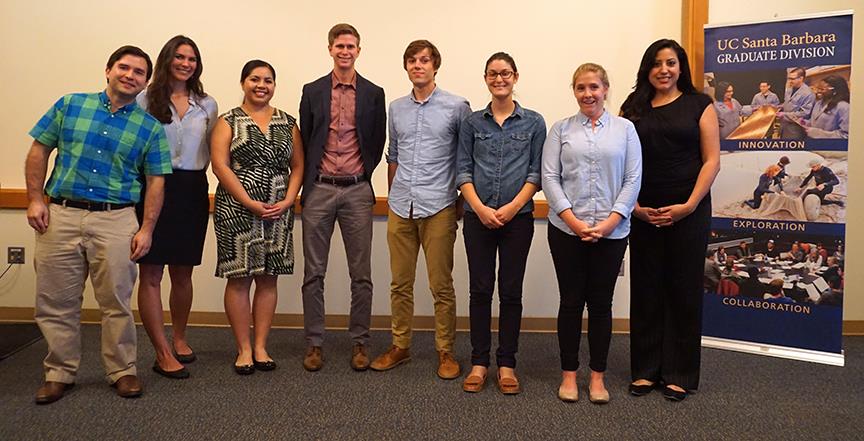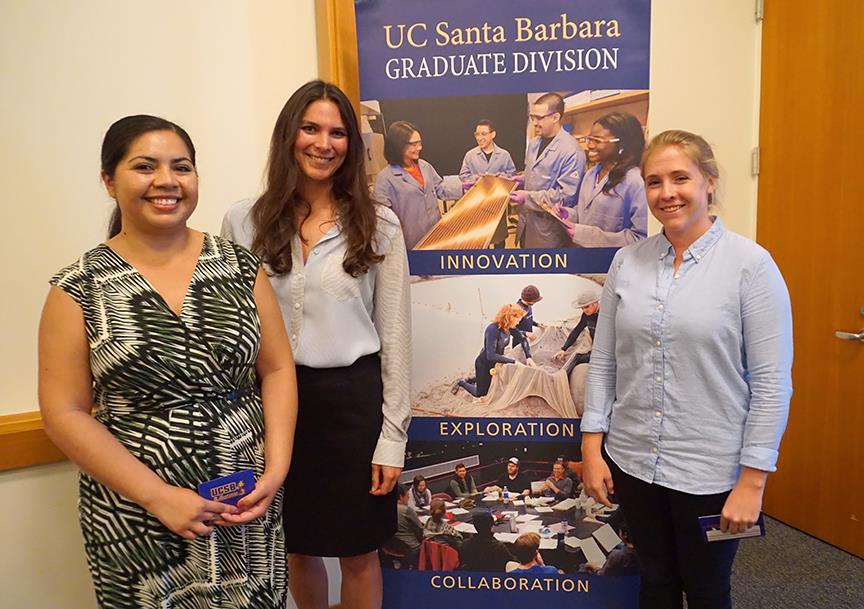Top Stories
Find out who the winners are from Preliminary Rounds 1 and 2 of the 2016 Grad Slam!
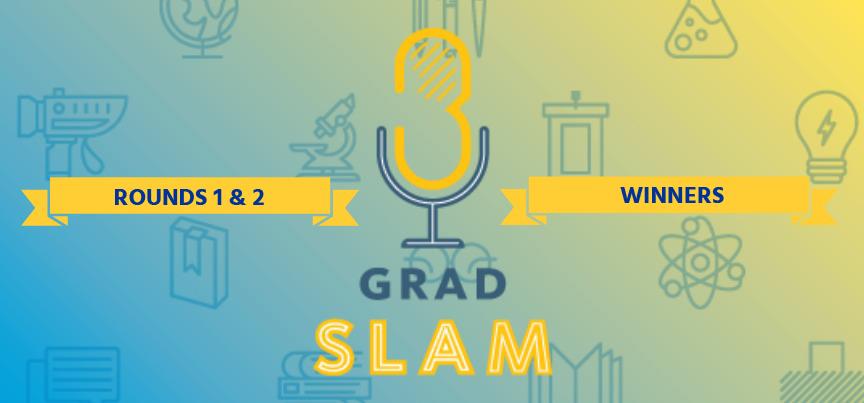
We have our first winners in UCSB's 2016 Grad Slam! And they were an all-women lineup.
â
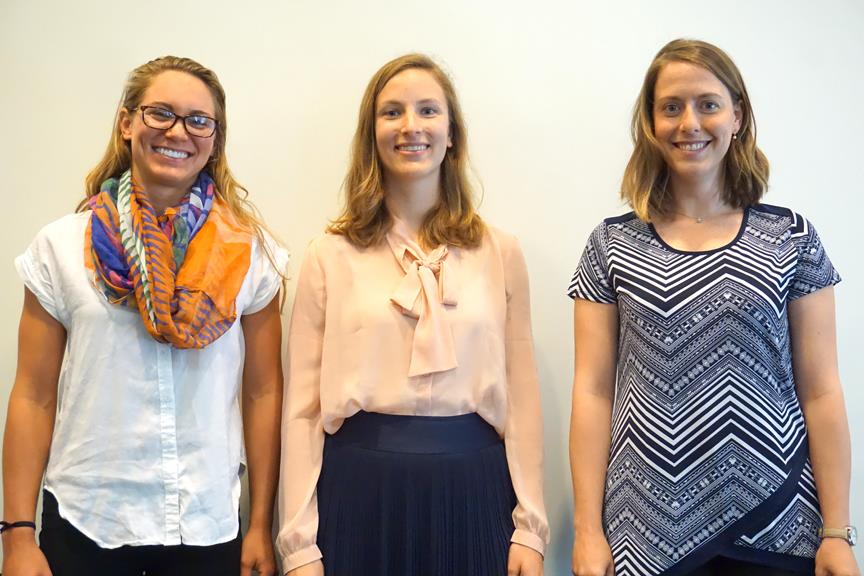
Round 1
Savannah Dearden
Dara Seidl
Mallorie Chase, People's Choice
Round 2
Katherine Millage
Sara Weinstein
Ester Trujillo, People's Choice
View photos and read synopses of all the talks from Rounds 1 and 2 below. You âmay find the full Grad Slam competition schedule here.
Round 1
Monday, April 4 | 11 a.m. to noon
Engineering Science Building 1001
Mallorie Chase | History of Art & Architecture
Paper Thronesâ and Unruly Urbanism in Modern Lisbon
Most architecture is created by people with zero political agency. However, historians need a new lens to interpret the built environment - one that focuses on occupation and decoration and upturns the notion that architecture is a monumental or aesthetic object created by a genius architect. If we focus on the way people adapt to challenges in space over time we can better describe human histories, because social relations are also always spatial relations. I study the complicated urban context of Lisbon, Portugal, in the 20th century, where paper thrones to Saint Anthony and tin shanty dwellings together show that architecture is always a political gesture.
Andrew Choi | Counseling, Clinical, & School Psychology
Measuring Prejudice and Encouraging Change from Within
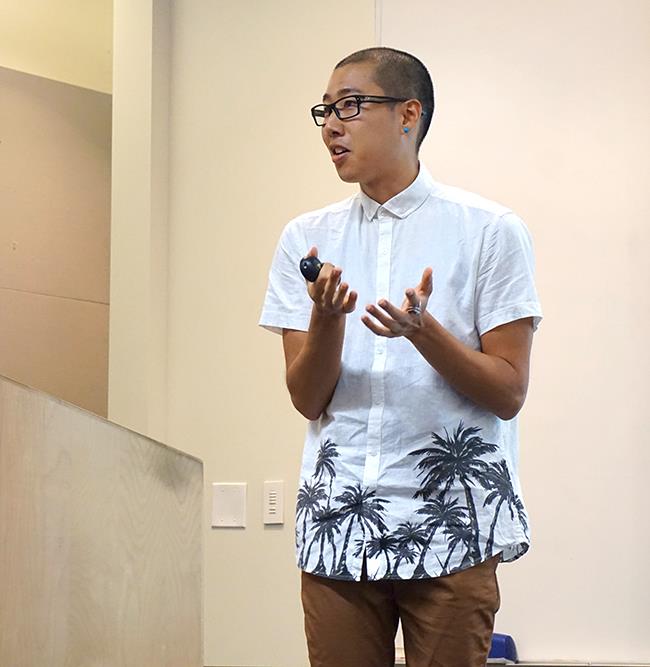 The presentation will expose the audience to the concept of internalized prejudice in minority populations and their consequences. Internalized prejudice will be discussed in the context of psychological measurement of human diversity. I will discuss implications for addressing problems of inequality and injustice.
The presentation will expose the audience to the concept of internalized prejudice in minority populations and their consequences. Internalized prejudice will be discussed in the context of psychological measurement of human diversity. I will discuss implications for addressing problems of inequality and injustice.
Samantha Coveleski | Communication
Heavy Issues in Weight Communication
I will discuss a project that investigated college student responses to email invitations to join a free weight management programâ as well as reactions to being insulted by the invite.
Kyle Crocco | Education
Why Is My Message So Repetitive Repetitive? Strategies for Improving Multiplatform Writing
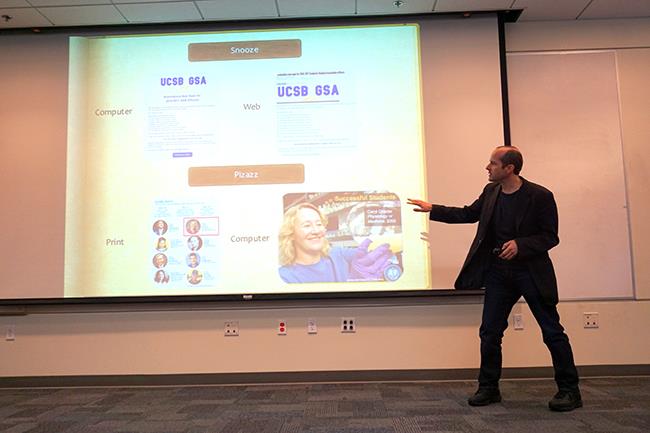 Technology has made it possible for professional organizations to communicate on multiple platforms using multiple modes. How does an organization create and implement a consistent message without being repetitive, redundant, or wrong? In order to do this, you must have a clear message, be aware of external factors, and have a strategy for using each platform.
Technology has made it possible for professional organizations to communicate on multiple platforms using multiple modes. How does an organization create and implement a consistent message without being repetitive, redundant, or wrong? In order to do this, you must have a clear message, be aware of external factors, and have a strategy for using each platform.
Aditya Dalakoti | Electrical & Computer Engineering
Communication Links: Why Did We Forget the Basic and Awesome Approach!!
Communication links used in the electronics industry have some major drawbacks. If we analyze the basic methodology of how links work today, it's hard to understand why the industry chose the path to reach the current architecture of the links. My research focuses on making super reliable and simple links which have wide usage throughout the industry. These links outperform the current industrial ones by a big margin in a lot of areas and have hardly any drawbacks.
Savannah Dearden | Molecular, Cellular, & Developmental Biology
Sparkling Sea-Slug Photonics: The Discovery of Nanoscopic Multi-Layer Reflectors in F. Iodinea
Nearly all organisms rely on light from the sun for energy, information, and guidance; hence, light is intrinsically linked to the evolution and complexity of life. Across the animal kingdoms, countless species have developed diverse yet specific adaptations to extract, manipulate, and exploit the energy in light waves. My talk describes the discovery and characterization of one such adaptation: the formation of biogenic crystals organized into brilliantly sparkling, nanoscopic, multi-layer reflectors in the marine nudibranch mollusk, Flabellina iodinea.
Sarah Manski | Global Studies
A New Global Economic Polity and Co-Constructing a Global Commonwealth
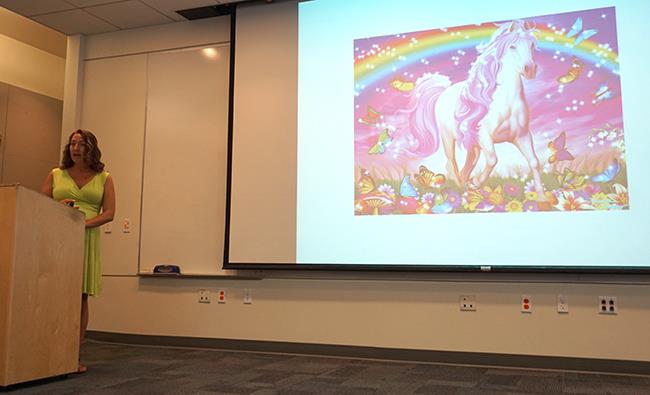 I will contribute to the study of democracy in the social sciences by theorizing a kind of democratic economic polity of the global through the co-construction of a global commonwealth. I will empiricize this by describing the various cases currently in existence, not simply as examples but as evidence of an immanent politics that are in these approaches that implies a global order in which economic democracy subsumes the state rather than the more common approach of the creation of a democratic global state to regulate and define the economy. What these agents who are building the next system are actually after is a global civil society in which the state is simply a servant of economic democracy. The social economy comes to dominate the polity as opposed to the polity dominating the economy. Then, on a global scale, how will this play out?
I will contribute to the study of democracy in the social sciences by theorizing a kind of democratic economic polity of the global through the co-construction of a global commonwealth. I will empiricize this by describing the various cases currently in existence, not simply as examples but as evidence of an immanent politics that are in these approaches that implies a global order in which economic democracy subsumes the state rather than the more common approach of the creation of a democratic global state to regulate and define the economy. What these agents who are building the next system are actually after is a global civil society in which the state is simply a servant of economic democracy. The social economy comes to dominate the polity as opposed to the polity dominating the economy. Then, on a global scale, how will this play out?
Dara Seidl | Geography
Where You At? Protecting Privacy through Location Masking
Our locations give away our identities - who we are, what we do, and who we spend time with. How can we protect privacy yet still reap the research benefits of location sharing? Geomasking techniques strike a balance between maintaining the spatial pattern of data and keeping our identities secret.
Alexandra Vasquez | Bren School of Environmental Science & Management
Finding a Place for Conservation in the Galápagos Marine Reserve
Less than 1% of the Galápagos Marine Reserve is protected from fishing. Can marine-based tourism help expand conservation in Darwin's living laboratory?
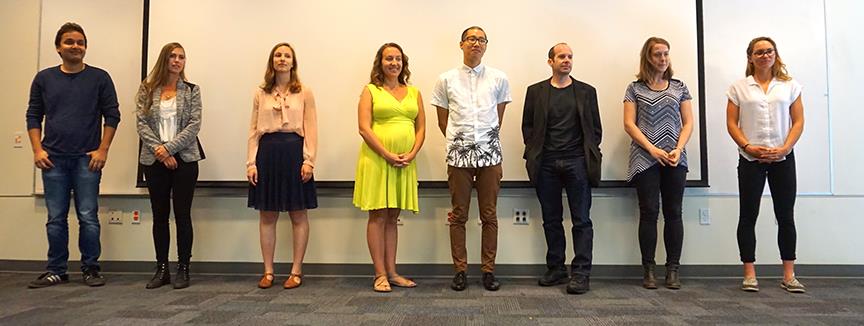
Round 2
Monday, April 4 | 3 to 4 p.m.
McCune Conference Room, HSSB 6020
Francisco Brandao | Political Science
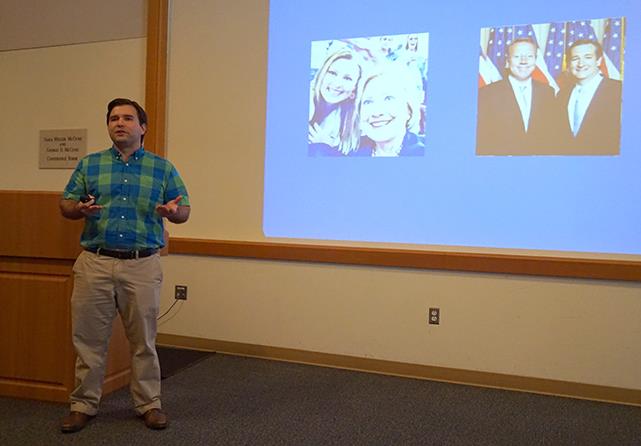 Polarization and Homophily on Facebook
Polarization and Homophily on Facebook
One of the most important questions on political communication research today is whether the new media environment is increasing or decreasing the extent of people's exposure to political difference. I describe an experiment to verify how polarization during election time might result in greater political homophily on Facebook. Using profile pictures of young Democrats and Republicans, I will demonstrate that strong partisans: 1) build their digital identities based on visual cues of their parties; 2) stereotype other Facebook users and are able to identify their partisanship; 3) prefer to socialize with Facebook users of the same party.
Owen Colegrove | Physics
Searching for New Physics at the LHC
I will be talking about the research I collaborate on at the Large Hadron Collider. Our group has been looking for new physics since the restart of the LHC at 13 TeV. I will address the novel challenge that the CMS experiment faces and innovative solutions that we are developing.
Taylor Damiani | Counseling, Clinical, & School Psychology
Path to Purpose: Finding Our Inner Music
Do you have purpose in life? Purpose is the stable intention to do something that is at once meaningful to the self and of consequence to the greater world. Can one's purpose be developed? If so, how?
Veronica Fematt | Education
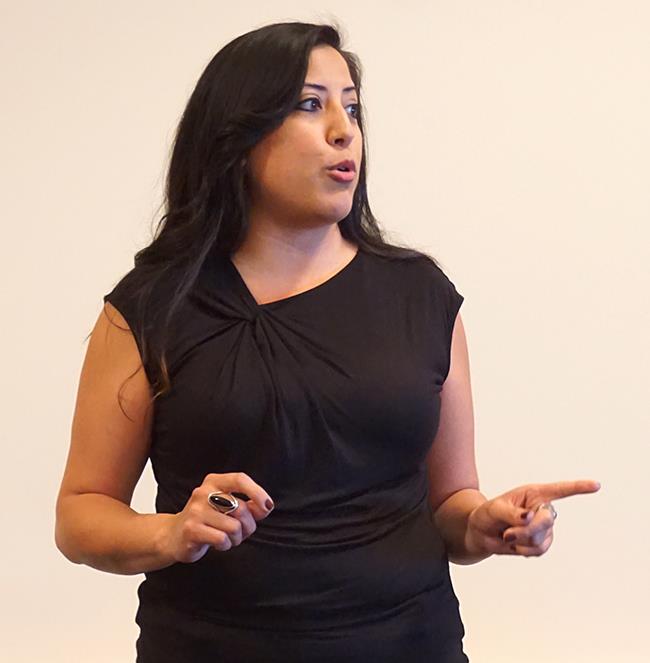 Transfer Student Microaggressions and Stereotypes: A Closer Examination of the Campus Climate at a Four-Year Research University
Transfer Student Microaggressions and Stereotypes: A Closer Examination of the Campus Climate at a Four-Year Research University
Extant literature on community college transfer students has well documented the various academic, social, and institutional challenges these students face when transitioning to a four-year university. Less is known, however, about the interactions and exchanges between transfer students and dominant groups (e.g., faculty, administrators, staff, graduate students, and traditional students) at selective universities. Interview findings revealed the occurrence of transfer student microaggressions, which engender specific stereotypes and assumptions about students' perceived attributes and capabilities (i.e., intelligence, socioeconomic status).
Katherine Millage | Bren School of Environmental Science & Management
Fishing for Benefits: Seafood Certifications in Small-Scale Fisheries
Global demand for sustainable seafood is increasing, driven by awareness of harmful fishing practices. To offer consumers assurance of sustainability, companies commonly source seafood from fisheries bearing a third party certification label. Traditional seafood certifications are very difficult for small-scale fisheries to obtain, so many organizations are creating new certification programs that might be more attainable. This project aims to investigate whether these new seafood certifications actually offer any tangible environmental or socioeconomic benefits.
Luke Patterson | Mechanical Engineering
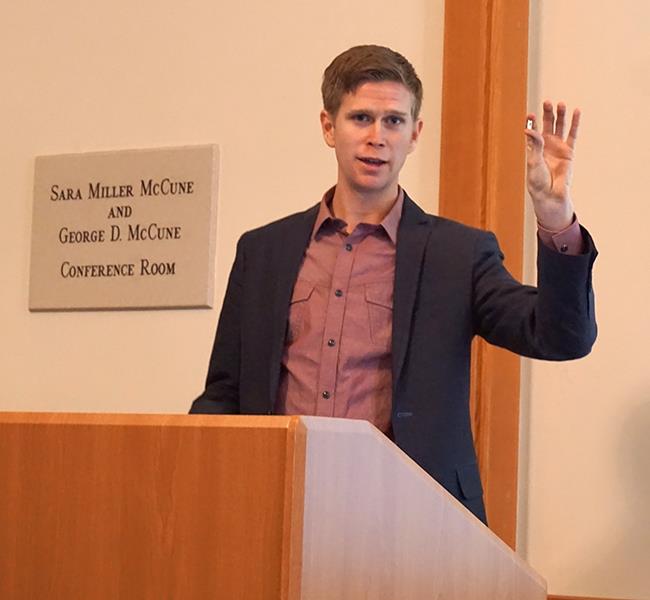 µHammer: Impacting Neuroscience One Cell at a Time
µHammer: Impacting Neuroscience One Cell at a Time
Our lab is developing a novel microscale impact generator called the µHammer that can mechanically interrogate cells at biologically relevant force ranges and frequencies. The µHammer will be used to simulate traumatic impacts to the brain on a cellular level. By subjecting various components of the nervous system to dynamic impacts we will increase our understanding of traumatic brain injuries and ultimately how best to prevent and treat them.
Madeline Shaffer | Earth Science
Piecing Together the Pamir-Tibet Orogen via Zircon Geochemistry
My presentation will discuss how the mineral zircon can be used to piece together the metamorphic history of a set of xenoliths found in the Pamir Mountains. Using scanning electron microscopy, cathodoluminescence, and laser-ablation split-stream technology, we can analyze the ages and trace-element compositions of zircons in multiple samples. These ages and compositions allow us to pinpoint the timing of major metamorphic events and describe the chemical/physical changes the rocks undergo during these events.
Ester Trujillo | Chicana & Chicano Studies
Understanding U.S. Salvadoran Ethnic Identity
In 2014, the Salvadoran population surpassed Cubans to become the third largest Latina/o population in the U.S. The children of Salvadoran immigrants have come of age in the United States following their parents' migration out of war-torn El Salvador in the 1980s. Today, Salvadorans in Southern California define their ethnic experiences in contrast to those of the Mexican-descent Latina/o majority and they locate their affinity to Salvadoran culture through the privileges that their U.S. citizenship affords them.
Sara Weinstein | Ecology, Evolution & Marine Biology
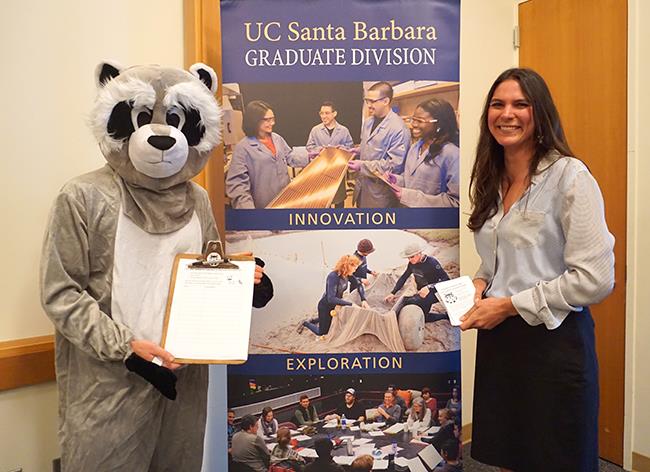 Worms in Raccoons: Worms in You?
Worms in Raccoons: Worms in You?
From mites on a mouse to worms in a raccoon, nearly every wild animal is home to a hidden community of parasites. Although these creatures are natural parts of healthy ecosystems, parasite spillover from wildlife to humans also ignites devastating epidemics. Disease spillover is not just an exotic phenomenon. In North America, millions of raccoons harbor a 15 cm long roundworm capable of causing fatal disease in humans and other wildlife. My presentation will examine the transmission and ecology of this parasite, the Raccoon Roundworm, exploring how anthropogenic changes alter wildlife populations, their parasites, and our own disease risk.
